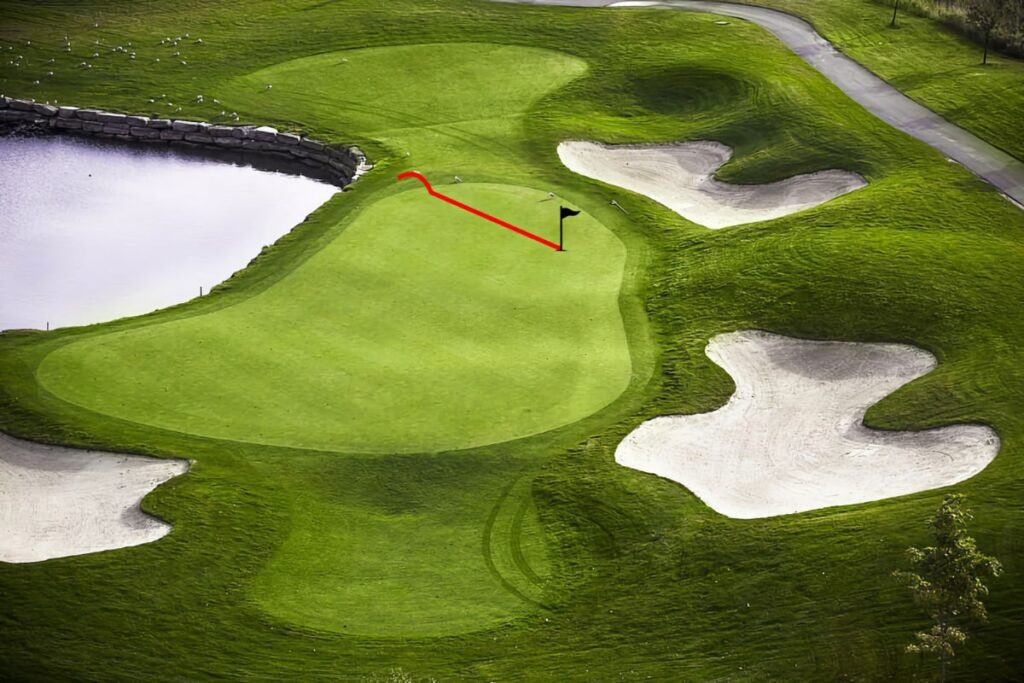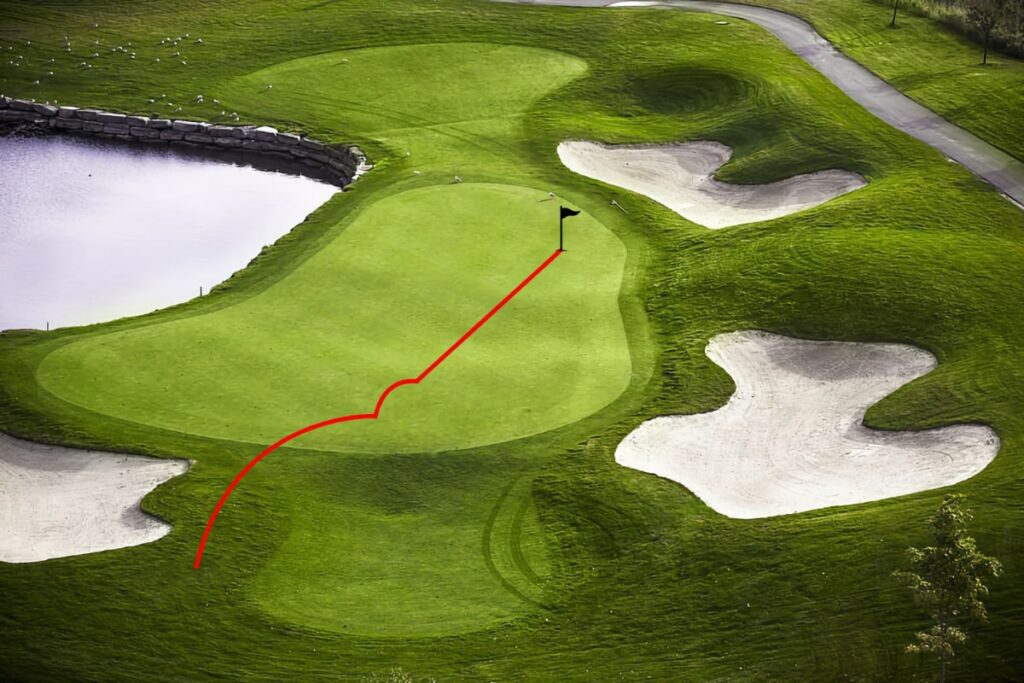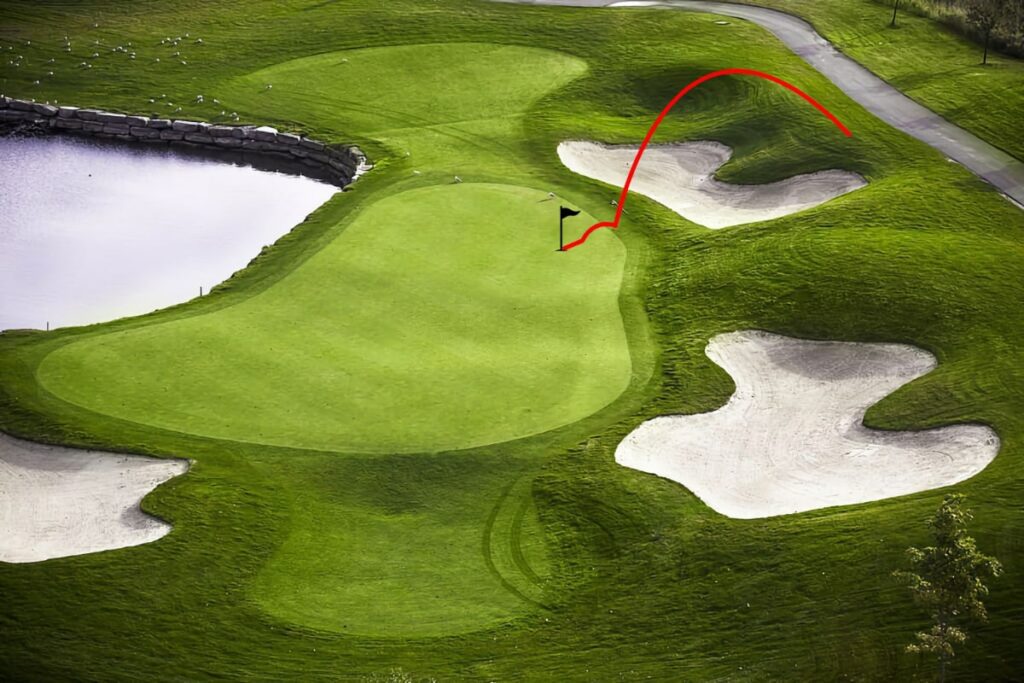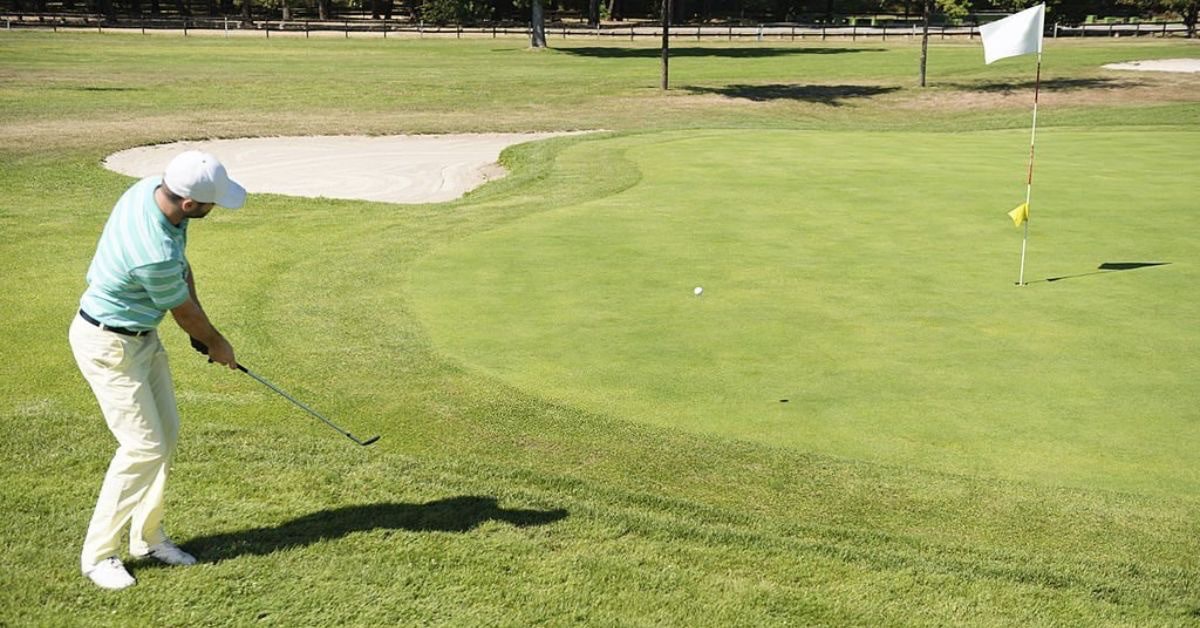Shots around the green account for a high proportion of our scores on the golf course.
Many golfers default to the lob wedge for every chip. But while it looks great when you pull it off, it’s probably costing you several shots every round you play!
In this article, you’ll learn what wedge to use around the green. I’ll cover the 3 most common types of chip shots, along with the ideal wedge for each.
What Wedge to Use Around the Green
Typically, average golfers should try and use low-lofted wedges where possible, such as a pitching wedge or a gap wedge. Essentially, this minimizes the potential risks of blading or duffing the chip. However, a higher-lofted sand wedge or lob wedge is preferred when chipping over obstacles or onto a downslope.
There are 3 main types of shots from around the green:
- The bump and run
- The lofted chip
- The flop shot
Each of these varies in difficulty, but you may need to play any of them at a given moment depending on where your ball ends up next to the green.
Let’s cover what wedge to use around the green for each of these shots.
1. The Bump and Run

Often, we find ourselves in the rough just off the fringe of the green. In this scenario, it’s best to opt for a club with less loft to perform a bump and run shot.
Here, it’s ideal to use a pitching wedge — or potentially even an 8 or 9-iron.
The bump and run is the most reliable and consistent shot to play when around the greens. Therefore, I highly recommend defaulting to this option where possible!
How to Use a Pitching Wedge Around the Green
Here are some handy tips for chipping with a lower-lofted club:
- Tip 1: Hold the base of the grip for more control.
Whether you’ve opted for a pitching wedge or an 8 or 9-iron, the shaft lengths are much longer than on a higher-lofted wedge. By gripping the club lower down, you can have more control of the clubface when striking the ball.
- Tip 2: Stand with your feet less than shoulder-width apart.
As you’re only chipping the ball a relatively short distance and don’t require lots of power, you only need a narrow stance. Think how you would stand over a putt.
- Tip 3: Use more of a putting stroke technique.
When chipping from just off the green, there’s generally very little distance to the hole. By using a putting stroke, you can use the loft of the club to effectively chip the ball over the fringe, allowing it to roll most of the way to the hole.
- Tip 4: Lock your wrists to prevent hinging.
Keeping your wrists locked, as you would in a putting stroke, will help you steadily guide the club through the impact with the ball. This eliminates the risk of striking the ball too steep or shallow, which would lead to unfortunate blades or duffs.
Ultimately, the bump-and-run technique is the most consistent and reliable way for the average golfer to get up and down — when chipping from just off the green.
2. The Lofted Shot

In some cases, you need more loft in order to get the ball onto the green.
For instance, you might find yourself chipping over an undulation, or onto a downslope on the green where a bump and run shot would roll through the green.
Here, a 54 or 56º sand wedge is ideal.
It provides enough loft to get the ball in the air quickly and land softly on the green, and it’s easier to hit than a very high-lofted 60º lob wedge off a tight fairway lie.
Make sure your wedge grooves are sharp, as you’ll want as much spin as possible.
How to Use a Sand Wedge Around the Green
Below are some tips on playing a lofted chip with a sand wedge:
- Tip 1: Position the ball slightly in front of center.
This is important, as it will encourage you to use the bounce of the wedge to glide the club head under the ball. Too far back in your stance, and you’re likely to stab down on it, resulting in unsuccessful blades or duffs.
- Tip 2: Stand with your feet less than shoulder-width apart.
As with the bump and run, take a narrow stance — like you would for a putt.
- Tip 3: Turn your body through the swing.
With a longer lofted shot, you need more rotation to generate enough height and distance on the chip. Think of your body as the leader in the swing — your arms are simply attached and follow along in the process of turning.
- Tip 4: Take a couple of practice swings.
Before committing to the shot, spend some time taking a few practice swings to feel comfortable grazing the sole of the club across the turf.
To summarise, a lofted shot requires more club loft and body rotation in order to get the ball higher in the air and travel a longer distance to the pin.
3. The Flop Shot

Sometimes, you’ll find an obstacle — usually a bunker — between your ball and the green, preventing you from using either the bump and run or the lofted shot.
Instead, you need to play a flop shot with as much loft as possible. This allows the ball to get aerial as quickly as possible, and land softly on the green with minimal roll.
For this shot, a 58º or 60º lob wedge is ideal.
Be warned! This is a high-tariff shot, and should only be attempted by amateur golfers when absolutely necessary. Without practice, a 60-yard blade is on the cards.
How to Use a Lob Wedge Around the Green
Here are some tips on how to perform a flop shot with a lob wedge:
- Tip 1: Open the face to add more loft.
With a flop shot, you typically want as much loft as possible. So, a 60-degree lob wedge can become more like 70 or 80 degrees by opening the clubface.
- Tip 2: Increase your body turn in the swing.
To get the ball aerial as quickly as possible, you need more swing speed. The best way to do this is to increase the amount of rotation in your swing. In effect, this will get the club traveling faster into the ball, popping it up and over the obstacle.
- Tip 3: Increase your swing length.
Another way to maximize speed is to increase your swing length. To do this, extend your arms further away from your body throughout the backswing so that there is lots of club head speed as you return to the ball.
- Tip 4: Keep your speed consistent through impact.
It’s vital to keep your speed consistent when hitting a 60 degree lob wedge. Put simply, don’t decelerate at impact to ensure the club glides under the ball.
Essentially, the flop shot needs as much loft as possible to get the ball up and over any immediate obstacles, and land softly on the green — ideally close to the hole!
In the video below, Rick Shiels covers each of these types of shots and scenarios to help you understand what wedge to use around the green:
Final Thoughts
In summary, most golfers should consider using a low-lofted pitching wedge where possible for the bump and run shot. This is a low-risk and consistent approach.
However, in situations where you are chipping a longer distance or onto a downslope, consider a higher-lofted wedge like a sand wedge to play a lofted chip.
When chipping over obstacles like bunkers, pull out the high-lofted lob wedge to play a flop shot. This is the hardest shot to master, but looks great when it works!


